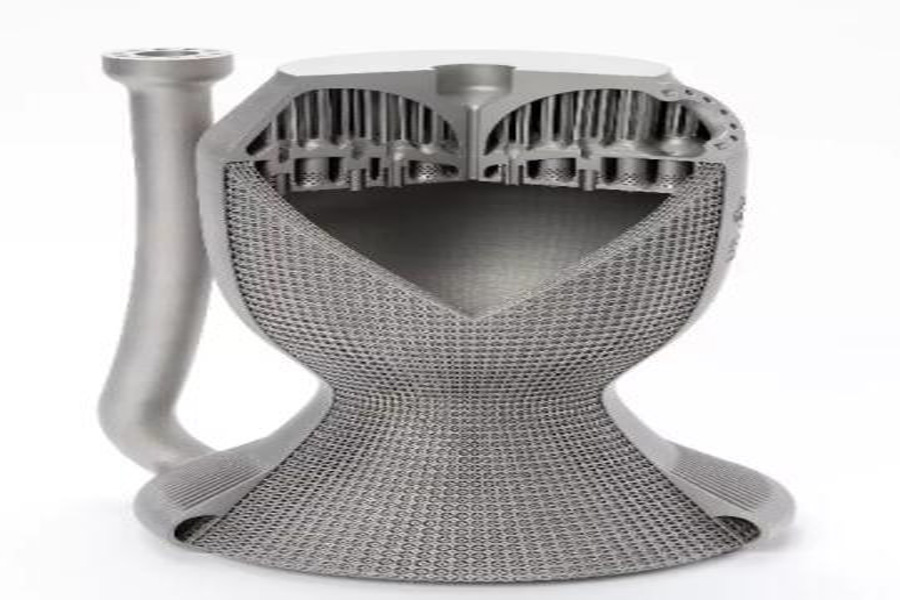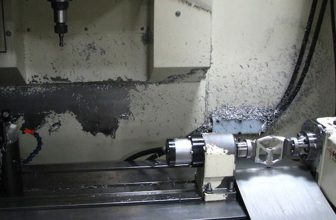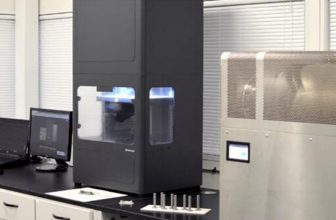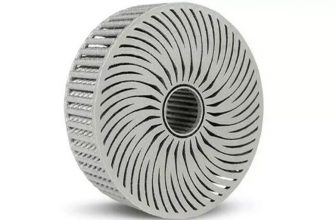
Digitization is playing an increasingly important role in the field of manufacturing. Relying on the soil of a large amount of data generated in digital manufacturing, artificial intelligence (AI) will give manufacturing stronger vitality, from real-time maintenance of equipment to innovative product design, to Intelligent supply chains and the creation of new business models are areas that can be empowered by artificial intelligence.
As a typical digital manufacturing technology, additive manufacturing-3D printing has massive amounts of data running in the entire workflow from design to production to quality assurance (QA). The complexity of additive manufacturing design is interdependent with many factors such as materials, production parameters, quality requirements, etc. In the face of huge complexity, it is difficult for human experience to stimulate the potential of additive manufacturing technology, making it a kind of production Manufacturing Technology. These characteristics just provide the application soil for artificial intelligence.
In this issue, I will let you know how artificial intelligence can empower additive manufacturing through the application of artificial intelligence in additive manufacturing.
Promote production-level applications of additive manufacturing
Although additive manufacturing technology is unique in realizing mass customization production and realizing complex designs, the application of this technology in manufacturing is still subject to many obstacles. Unfavorable factors include: speed and quality of final parts or require further investment. To match this technology, the enterprise is out of financial considerations and so on. However, artificial intelligence technology stimulates the potential of additive manufacturing technology in key areas such as additive manufacturing design, process development, quality control, and material development, and promotes the application of this technology in production.
l. The demand of design complexity for AI
The complexity of additive manufacturing design and many factors are interdependent, such as material quality will affect the performance of parts, thereby affecting design decisions; production parameters will affect quality assurance, and quality assurance requirements will be reflected in those design decisions… and so on.
Faced with such a huge design complexity, the question we should think about is not how to use AI in additive manufacturing, but if there is no AI-driven design, production, and quality assurance process, relying only on the power of human designers and engineers, Can we make good use of the advantages of additive manufacturing technology in improving product performance and accelerating innovation?
For example, Additive Flow has introduced the concept of geometric freedom and the “multi-attribute” concept of achieving customized material properties in different areas in the design software for additive manufacturing, which makes the design of additive manufacturing more complicated. Additive manufacturing provides the opportunity to adjust parameters or apply different parameters to different areas of the part throughout the printing process. From this point of view, compared with traditional manufacturing processes, additive manufacturing technology has great potential to release productivity, cost and performance improvements. However, relying on the designer’s experience to manually decide which areas should have which attribute sets is a very complicated process without guaranteeing the success rate. The multi-attribute artificial intelligence optimization algorithm in FormFlow can just overcome this challenge. The software builds on the solid foundation of Additive Flow’s multi-material leadership position, capable of handling different parameter sets in optimization, while enabling skilled engineers to seamlessly apply their parameter knowledge on separate grids.
Also in the field of design for additive manufacturing, generative design, which is a natural “good partner” for additive manufacturing, is also an artificial intelligence-driven process. In the article “Three Key Revolutions Brought by Artificial Intelligence to Manufacturing”, stated that designers or engineers input design goals, materials, manufacturing methods, and cost constraints into the generative design software. The software then explores all possible permutations of solutions and quickly “generates” design alternatives. Finally, it uses machine learning to test and learn what works and which does not work in each iteration. Generative design software can help humans complete the complex modeling process that is difficult to achieve. If you are trying to optimize the wing design of an aircraft, or the spoiler or battery design of a new electric car, or even just a plastic mold for a mobile phone case, through Generative design software can complete engineering design equivalent to 50,000 days in one day.
2.3 The “eyes” and “brains” of D printing equipment
According to Ai Build, which develops software and hardware for additive manufacturing for factories of the future, any software-driven technology that does not use AI will sooner or later be replaced. Software developers and equipment manufacturers shoulder the huge responsibility of jointly developing products and redefining the boundaries of additive manufacturing. If an additive manufacturing equipment can bring practical or commercial value to its customers through AI, other competitive products that do not apply AI technology are very likely to be unable to survive in the market in the next 5-10 years.
Ai Build began to use machine vision technology in 3D printers in 2016 for autonomous tool path planning and automatic fault detection. At the time, industrial 3D printing equipment with embedded cameras was not common, but now most industrial 3D printing equipment comes with a built-in camera. Ai Build is now able to develop computer vision solutions for partners and applications on different printing platforms. Ai Build believes that in the next 5 years, industrial 3D printing equipment without basic computer vision functions will not exist.
Avoid using gcode files to describe tool paths in AiSync software developed by Ai Build. This is very counter-intuitive, because all 3D printers and CNC machines on the market use gcode or brand-specific gcode-like languages to drive machine movements. gcode works well in a perfectly deterministic world, and can predict the entire process with high precision. However, in reality, the additive manufacturing process is far from perfect, so the physical form of 3D printed parts is difficult to accurately predict. This is because even the smallest build volume change during the production process can lead to fatal deviations in the additive manufacturing process. Even if the additive manufacturing environment can be fully controlled, and if there is a powerful simulation engine that can accurately predict material behavior in a layer 99.9% of the time, the overall prediction is made on a typical part with thousands of mutually supporting layers The success rate will still be less than 30% for statistical reasons.
This is the key reason why Ai Build abandoned gcode and developed a new and more flexible machine control process from scratch. AiSync software uses a combination of offline and online optimization methods to control the actions of the 3D printer. AiSync does not need to slice the design and upload the static gcode file to the computer. Instead, it uses a powerful computer on the cloud to analyze the design and send the optimized instructions to the computer in an abstract format. These instructions will then be interpreted bit by bit by another computer at the edge and converted into machine-level instructions in real time, which can access sensor data from the 3D printing device in real time. This dual optimized infrastructure can combine the advantages of cloud supercomputing with advanced tasks such as path planning and edge computing for time-critical tasks such as fault detection and quality assurance, thereby making full use of the advantages of AI algorithms.
Machine vision and machine learning algorithms are artificial intelligence technologies closely related to additive manufacturing hardware equipment. Machine vision and machine learning algorithms are like the eyes and brains of 3D printing equipment, giving the 3D printing equipment the intelligent attributes to monitor and control the printing quality and reduce the risk of printing errors.
A machine learning algorithm created by researchers at Carnegie Mellon University can help us better understand the significance of these technologies for additive manufacturing technology. This algorithm can perform process monitoring and error correction for laser powder bed melting technology. Researchers at Carnegie Mellon University used computer vision algorithms to take images of the powder bed and extract features. The researchers grouped these features and compared them in different levels of analysis until the fingerprint of the image was created. Artificial intelligence has learned how to recognize different defects because the researchers provided hundreds of pre-labeled training images. Now, it can compare the fingerprints of the new image it receives with its known fingerprints to isolate various anomalies. This method of in-situ monitoring and analysis of powder bed images may become a component of a real-time control system for powder bed metal melting. This work will make metal 3D printing a big step forward on the development path of a highly reliable process in industrial production.
- Analyze process parameters and material properties
Manual setting of 3D printing parameters is difficult to avoid the production of a large number of scrapped parts, but artificial intelligence-driven parameter setting software is an effective way to get rid of the dependence on manual experience and reduce the scrap rate.
According to market observations from 3D Science Valley, OPTOMET software applies artificial intelligence to the preparation of laser melting SLM series of selected areas, reducing the parameter preparation time from several weeks to several days. This software is highly intelligent and only needs to input powder Parameters and processing requirements, the system will automatically optimize the processing parameters, which saves the time of manual parameter setting and avoids the production of a large number of scrap parts caused by manual parameter setting. OPTOMET software also uses artificial intelligence to predict the mechanical properties of parts, opening an intelligent door to the development of new materials.
Senvol, another company engaged in additive manufacturing data and software, has developed a data-driven machine learning software Senvol ML to analyze the relationship between additive manufacturing processes and material properties.
Senvol ML can be used to analyze data from any additive manufacturing process, equipment, and any additive manufacturing material. The software can help companies quickly characterize and identify additive manufacturing materials and processes. Senvol ML facilitates the development of statistically proven material properties, reducing the conventional material characterization and testing required to develop design allowances. It also allows users to select appropriate process parameters on a specific additive manufacturing machine given the mechanical properties, which means that manual trial and error can be reduced, which saves a lot of time and money.
Create new materials with new characteristics
Artificial intelligence will play an unimaginable role in creating materials that are stronger, lighter, more flexible, and cheaper to produce.
In this particular case, machine learning can often be used to develop new materials. Materials scientists only need to enter the required characteristics into the program, and the machine learning algorithm can predict which chemical structural units can be combined at the micro level to create structures with the required functions and characteristics.
According to market observations from 3D Science Valley, a new machine learning algorithm developed by Intellegens, an artificial intelligence company in Cambridge, England, has been used to design a new metal additive manufacturing nickel-based alloy. According to Intellegens, the algorithm saved the team about 15 years of material research time and about $10 million in research and development costs. The new alloy designed by Intellegens’ Alchemite™ deep learning algorithm is manufactured through a directional energy deposition (DED) metal 3D printing process. The alloy can meet the performance goals required for additive manufacturing for the manufacture of jet engine parts.
Data, data or data!
There is no doubt that artificial intelligence needs to work in conjunction with additive manufacturing. But one of the challenges hindering the integration of artificial intelligence technology and additive manufacturing is data. The high complexity of 3D printing has given birth to the demand for artificial intelligence technology, but this requires a large amount of data to ensure that the machine learning algorithm can perform the correct “learning”. The best optimization requires the best data set. However, the field of additive manufacturing There are still challenges in data acquisition and management in China.
According to market observations from 3D Science Valley, ASTM International Standards Committee and Americas Makes have taken action. They have collaborated to launch an additive manufacturing data strategy guide. The guide points out the gaps, challenges, solutions and solutions of additive manufacturing (AM) data. action plan. ASTM proposed the creation of a robust and robust additive manufacturing data ecosystem in the Additive Manufacturing Data Strategy Guide to promote the exponential growth of 3D printing.
Although there is a natural basis for perfect integration and matching between artificial intelligence and additive manufacturing, there is still a long way to go to achieve this goal. The element that can stimulate the potential of artificial intelligence is data. However, to obtain massive amounts of data in the additive manufacturing process and to correctly integrate artificial intelligence into the additive manufacturing process, standardization and collaboration between relevant stakeholders in this field are necessary. of.





